The Beautiful Visiri Stone Silk Sarees
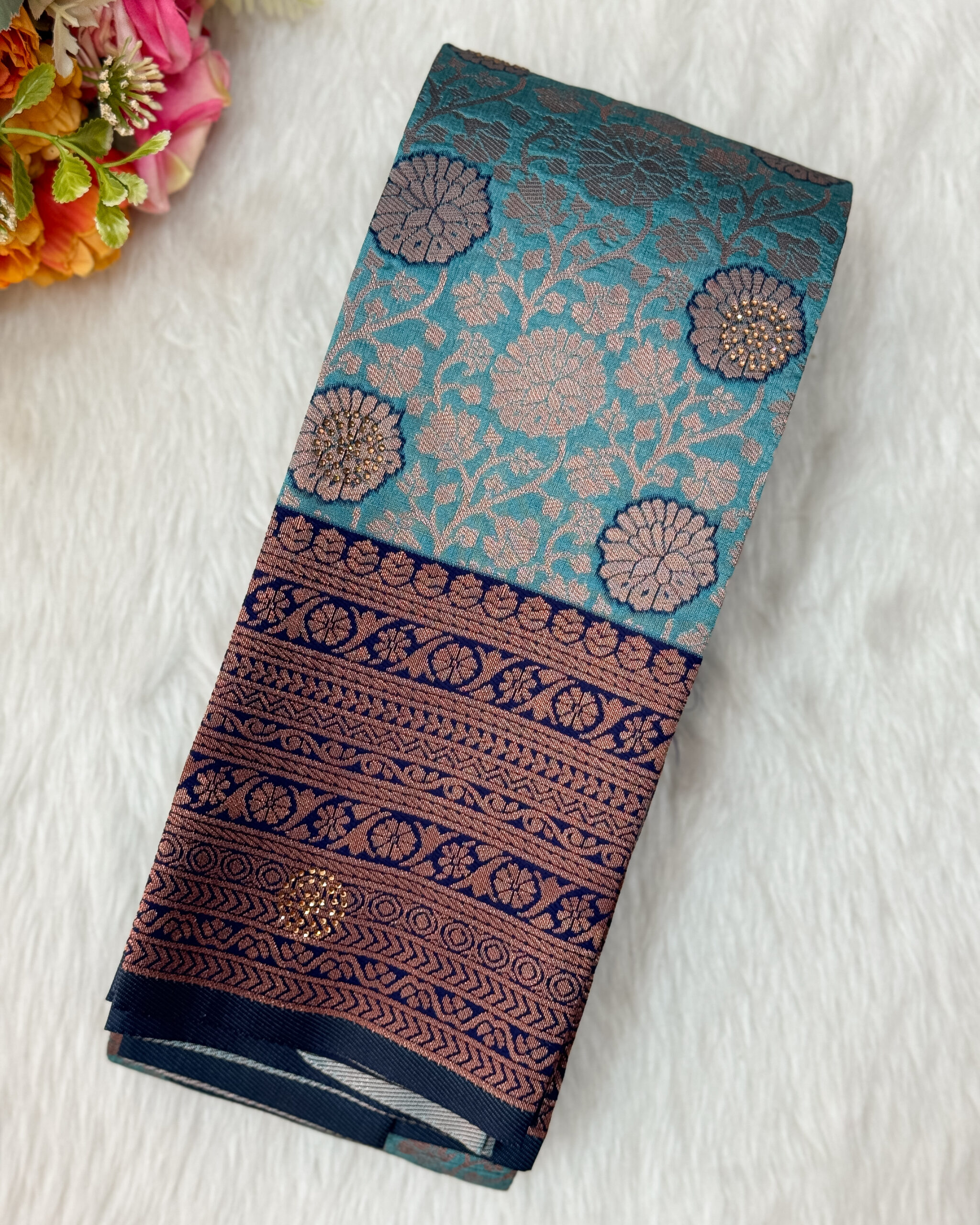
The Beautiful Visiri Stone Silk Sarees:
The Discovery of Silk Saree from the 27th century BC claims that the discovery of silk happened by mistake. It said that one day, while Empress Leizu was drinking tea, a silk worm’s cocoon dropped into her cup.The thread of the cocoon unrolled in an attempt to escape. The Empress then had the idea to weave the thread. The Yellow Emperor taught his wife the art of sericulture, or growing silk worms, by encouraging her to study the life of the worm. Her group received instruction as well, which led to the development of the silk business.
Beautiful Visri Stone Silk Saree | Mulberry | KV0020
Silk’s history in China:
Among the first textiles ever discovered by humans is silk. The history of silk dates back to China in the 27th century BC, when only the Chinese were allowed to use it. Silk was utilized by the Chinese for writing and clothes, and during the Tang Dynasty, the color of the silk one wore revealed their social standing.
The Silk Road:
The Chinese concealed silk from the rest of the world for a very long period. The Silk Road, also known as the Silk Routes, connected Europe, North Africa, and the Mediterranean region only in the latter part of the first millennium BC. Initially, nations like India and Japan acquired knowledge of sericulture and quickly became involved in the eastern monopoly on silk manufacturing.
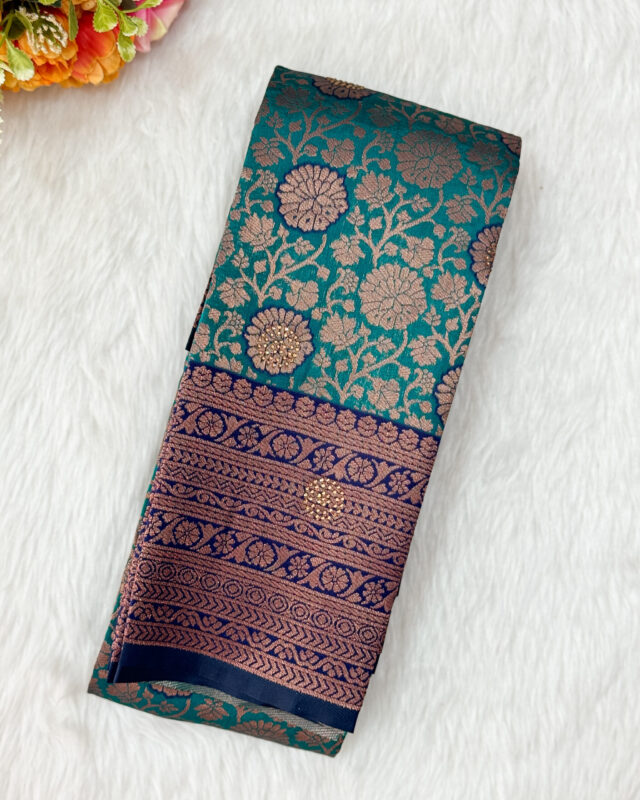
The Beautiful Visiri Stone Silk Saree.
Silk in India:
Chinese silk cloth, primarily from Samarkand and Bukhara, was brought to India by traders, and the nobility and kings loved it. Because royal families and temples in India demanded rich materials, Jamawar and other brocade weaving centers grew up in holy cities and commerce hubs. The ancient centers were primarily found in South India, Gujarat, and Malwa. The major hubs for brocade weaving in the North were Delhi, Lahore, Agra, Fatehpur Sikri, Varanasi, Mau, Azamgarh, and Murshidabad.
India today:
Nowadays, silk is considered a luxury commodity on the Indian subcontinent. The five Indian states of Karnataka, Andhra Pradesh, Tamil Nadu, West Bengal, and Jammu & Kashmir generate around 97% of the world’s raw silk. The majority of silk is produced in the North Bangalore regions of Muddenahalli, Kanivenarayanapura, and Mysore. Tamil Nadu, where mulberry cultivation is centered in the districts of Coimbatore, Erode, and Dharmapuri, is another developing silk producer. The first places with automated silk reeling machines were Hyderabad, in Andhra Pradesh, and Gobichettipalayam, in Tamil Nadu.
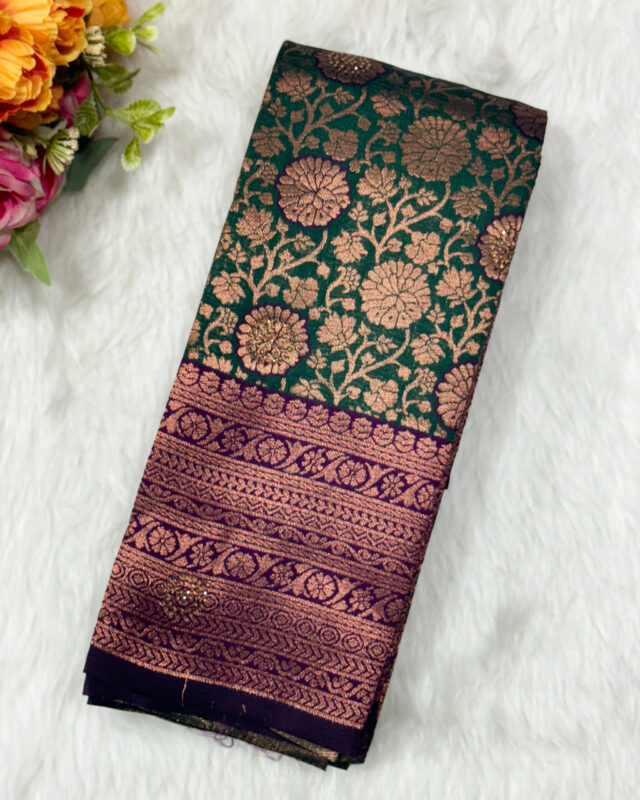
Indian Silk a variety of types and forms :
Tanchoi Silk:
A weaving method utilizing a combination of silk from China and India.
Garad Silk:
With its crimson border and tiny paisley motifs, garad silk is unique and comes from West Bengal. The fine texture of the silk fabric used to weave Garad sarees is achieved through the close weaving of silk yarns.
Jamawar:
A mixture of cotton and wool is mixed with Pashmina silk to create an adulterated product known as Jamawar Silk. Usually, this is used to weave winter shawls.
Matka Silk:
mostly produced in Karnataka and Kashmir, this coarse handloom silk fabric is created from leftover Mulberry silk without removing its gum (sericin) portion.
Murshidabad Silk:
Made in East India, the Silk Mecca.
Bangalore Silk:
Made on Bangalore’s silk fields, Bangalore silk is prized for its simplicity and purity.
Angora Silk:
Made from the fur of the subdued Angora rabbit, this yarn is renowned for its delicate feel.
Silk Embroidery:
Silk embroidery on a variety of fabrics featuring intricate patterns.
Pochampally/Pochampalli Silk:
A variety of silk that comes from the town of Boodhan Pochampally, which is situated in Andhra Pradesh’s Nalgonda district and is referred to as the “silk city of India.”
Mysore Silk Crepe:
Originating in the Karnataka silk capital of Mysore, this fabric is woven from firm spun silk yarn.
Sournachuri Silk:
This West Bengali silk is known for its beautiful sheen, which is achieved through the incorporation of gold thread into the weave. It is sometimes referred to as the distinguished sister of the Baluchari Silk saree.
Raw Silk:
The most uncooked and natural kind of silk, raw silk has no twist and may be effortlessly woven into a variety of materials.
Kosa Silk:
Originating in Chattisgarh, this material is prized for its velvety feel and subdued, brown hue. It is accessible in a variety of tones, including cream, dark honey, gold, and pale. One type of Tussar silk is called kosa.
Tussar Silk:
Also referred to as Wild Silk, Tussar is made only in India and has a gold shimmer throughout its fabric.
Muga Silk:
Known for being the strongest natural fiber, Muga silk strands are entirely yellow in color and are produced exclusively in Assam.
Eri Silk:
Known by various names throughout India, including Errandi and Endi, Eri Silk is the purest type of silk from the East, possessing a dull yellow, gold-like shine.
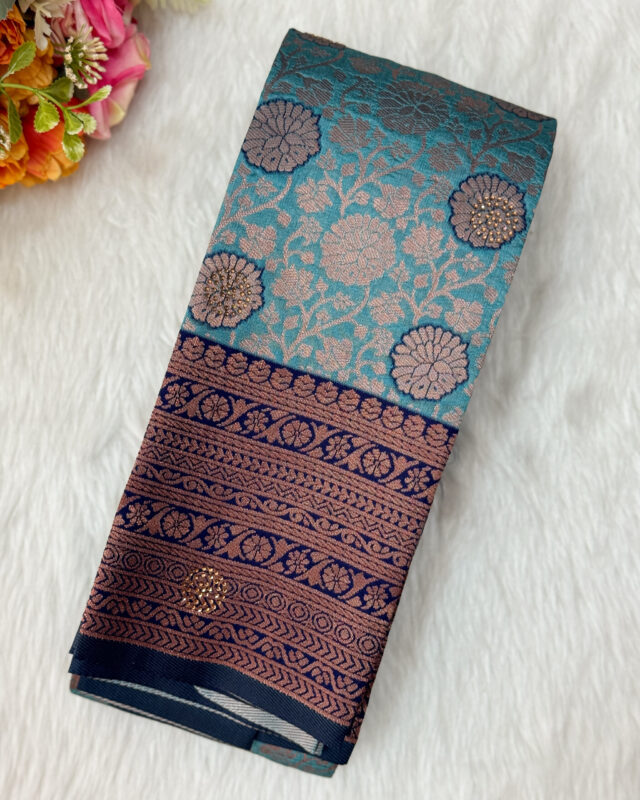
Dharamavaram Silk:
Also referred to as Silk for the Bride, this Andhra Pradesh-based silk is distinguished by its gold-plated borders.
Narayanpet Silk:
Native to Andhra Pradesh, Narayanpet textiles are known for their embroidered surface designs that are checked, and their elaborate ethnic border or pallu motifs, which often feature temples, are particularly striking.
Pat/Paat Silk:
Originating in Eastern India, Pat silk is prized for its exceptional brightness, superior quality, and long-lasting character. It is available in off-white or bright white hues.
Cot Silk:
A reasonably priced silk that is a finely blended blend of silk and cotton.
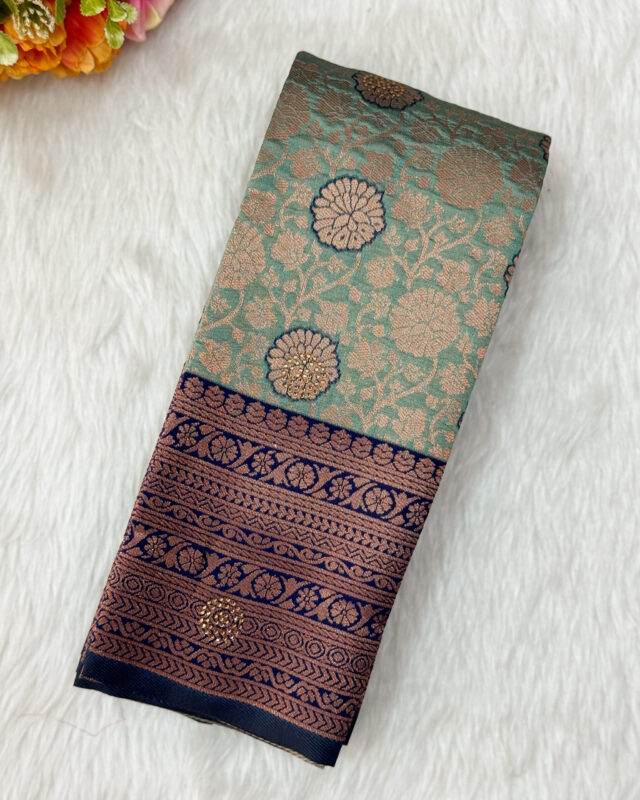
Kanchipuram:
This silk, from the Tamil Nadu, India village of Kanchipuram, is prized for its luster and resilience. They last longer because of the superb finish and rich quality.
Bhagalpuri Silk:
Often referred to as the “Queen of All Fabrics,” Bhagalpuri Silk is a product of West Bengal and is highly prized for its remarkable tenacity and exceptional quality.
Uppada Silk:
Originating in Andhra Pradesh, Uppada silk is also referred to as Uppada Pattu (Silk in Telugu). Typically woven using a cotton warp, this one is primarily identified by the number of threads in both length and width.
Art Silk:
An abbreviation for artificial silk, art silk is produced using a synthetic fabric similar to rayon that has a much less production and manufacturing costs than silk.

